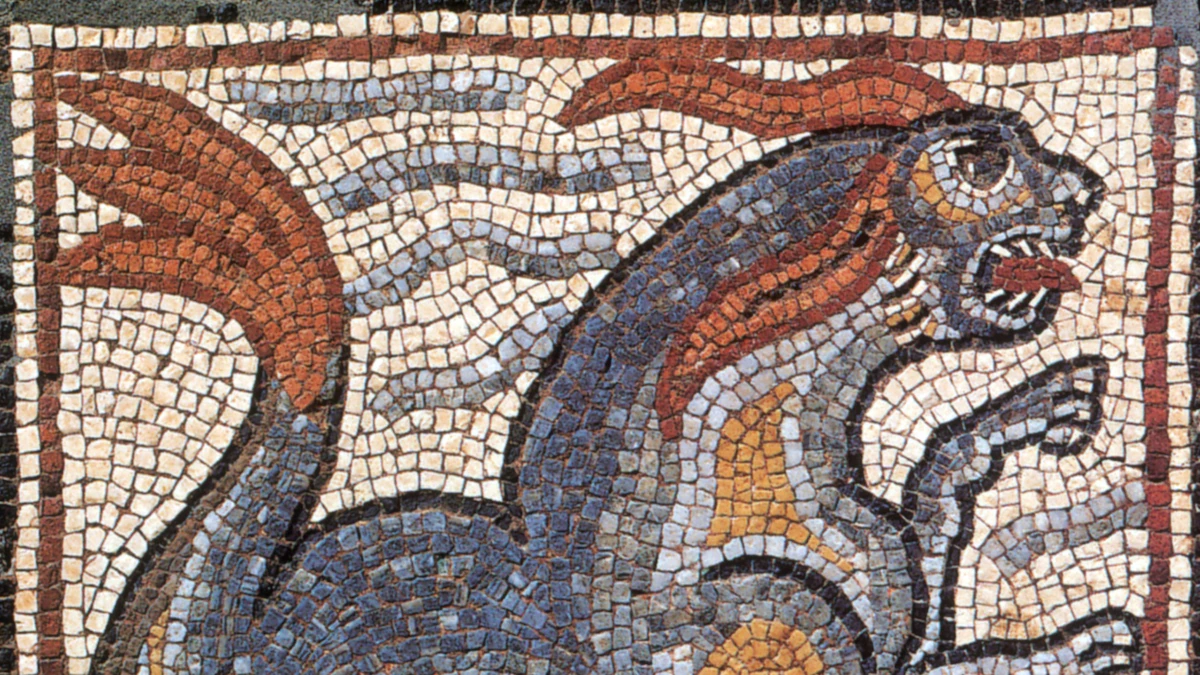Copyright National Geographic

“It sank many ships and troubled the passengers of many others.” These words sound like they could have been written about White Gladis, the orca who has earned renown in recent years as the potential ringleader of killer whales ramming boats and ripping off their rudders. But in fact this text was written by the Greek historian Procopius, who told of a terrible sea monster called Porphyrios that tormented the people of Byzantium for 50 years before eventually being felled by a pod of dolphins. (Orcas are ramming boats again and scientists now think it’s a game.) Its colossal size—as long as a school bus—has led many people to suggest that the brute was a sperm whale. But for others the present-day orcas sinking boats off the coast of Spain and Portugal casts a new light on the sixth-century tale of Porphyrios. So was this marine menace an orca—or another species altogether? We asked a sea monster historian and a modern marine scientist to examine the clues from this story. The story of a real-life sea monster In his famous text History of the Wars, Procopius describes a huge “kētos” that “was causing trouble to Constantinople and the region around it,” on and off for 50 years. LIMITED TIME OFFER The ancient Greek word kētos is usually translated as sea monster or whale but the term is actually “frustratingly vague,” says Ryan Denson, assistant professor at the University of Silesia in Katowice, Poland, and author of the forthcoming book A Zoobiography of the Ancient Sea Monster. Denson, who shared his translation of these passages with National Geographic, says it can include tuna, large fish, sea dogs (likely sharks), and even mythical animals. (Giant 'sea monster' fossil is one of the largest of its kind.) As the story goes, the sea monster sank many ships and carried its passengers away, sometimes disappearing for long periods before returning to cause more trouble. It was so problematic that the Emperor Justinian, who ruled from A.D. 527 to 565, became concerned but he had no way of stopping the mischief-maker. “It's not implausible that Justinian might have sent some troops out on a boat to try and harpoon the thing,” says Denson, but we have no way of knowing. After instilling fear in sailors for half a century, Porphyrios was brought down by its thirst for killing. “Driven by either hunger or a love of victory,” Procopius writes, the monster beached itself while chasing a pod of dolphins. “It fell upon quite deep mud”—and in its attempt to free itself the monster “stirred everything” and got stuck. Once Porphyrios stranded, it was at the mercy of the townspeople. “People seem to just rush and hack the thing to death,” says Denson. Some ate the meat immediately while others preserved it with salt and took it home to enjoy later. This description of the animal’s downfall might offer some hints to its identity. Contender #1: Sperm whales One clue that Procopius gives about this monster is that it stretched to 45 feet. “There's not a lot of animals in the sea that are that size,” says Lee Fuiman, a professor at the University of Texas at Austin’s Marine Science Institute. This includes blue whales, fin whales, sperm whales, bowhead whales, and whale sharks—but of those animals, only sperm whales are active predators. The others are filter feeders, eating plankton, krill, or small fish. (Stunning rare images of polar bear scavenging on a sperm whale captured in the Arctic.) Sperm whales can also plausibly live for as long as Porphyrios, with a life expectancy of around 60 years. That’s why sperm whales are often seen as the main culprits. But that’s where things start to get complicated. Procopius writes that this behemoth even hunted dolphins. “That starts to limit what this could be,” says Fuiman. Sperm whales, which are the ocean’s largest toothed predator, go after squid, not dolphins. Contender #2: Orcas An animal that hunts dolphins? “That sounds a lot like orca,” says Fuiman. Orcas and sperm whales are both known to strand themselves on the shoreline by mistake when swimming out of their depth, as Porphyrios did. Some orcas even beach themselves on purpose to catch seals before the waves bring them out to sea again. It’s risky, as misjudging their timing can leave them high and dry. Female orcas can also live to 90, more than enough time to torment generations of ancient sailors. But could the brute’s age be a red herring? Did one individual terrorize the waters for that long, Denson asks—or did locals just call any whale they saw Porphyrios? (Scientists finally know the clever tricks orca use to hunt whale sharks.) And why, if it was an orca, is there no mention of its iconic black-and-white markings? “You can't miss that,” says Fuiman. The creature’s name, Porphyrios, means something like “the purple one.” But this probably referred to the wine-dark sea or its grandeur through—purple is the color of royalty—rather than describing its skin, says Denson. One more argument against orcas is that they aren't big enough to match Porphyrios. The largest recorded orca was 32 feet long. Fuiman says this is also why large predatory sharks like great whites and tiger sharks were unlikely to be the culprit. Even though their diets also fit the profile—“the size isn’t quite right” as they tend to top out around 20 feet. An unreliable narrator? Or maybe we’re looking in the wrong direction entirely? Denson has reason to believe some of what Procopius says could be “a bit suspect.” The historian wasn’t an eyewitness to the events in Porphyrios’ story, “so we have to be a bit suspicious that certain things might be exaggerations,” he says. Historical texts were also more colorful in the ancient world. “When we read history books today, we want them to stay on topic,” says Denson, but Procopius was “a very digressive author. He likes to give stories just for the sake of them.” While adding flavor to his history, some things may have been embellished. “‘Ships’ is very generic,” says Denson. The word can mean gigantic naval triremes—the sinking of which fits with the reputation of a gigantic and terrifying monster—but, equally, might Procopius have been referring to little rowing boats? “I would be a little bit suspicious about that.” And did Porphyrios intentionally attack these vessels? “It's very easy to imagine a sperm whale or orca bumping into [a vessel], even accidentally, and knocking someone over,” says Denson. When the victim tells people about the incident, “it gets exaggerated.” The beast’s size could have been exaggerated for the story—just like the size of a fisher’s catch grows with each retelling—or the measurements might not be accurate. “We take for granted how standardized units of measurement are today,” says Denson. “In the ancient world, different units of measurement varied based on where one was or what century.” This makes it hard to know Porphyrios’ exact size today. Denson also questions whether someone saw Porphyrios strand while hunting dolphins or if they found it on land and assumed that’s what happened. Rather than describing actual events, there could be some sort of metaphorical meaning in Procopius’s sea monster story. “Kētos was also the ancient Greek word for the Biblical monster Leviathan,” says Denson, and the text mentions the capture of this sea creature alongside apocalyptic events like earthquakes and the rising of the Nile. All this makes it nearly impossible to know what we can believe. “When we don't know exactly why he's telling us this, it's hard to say which bits might be exaggerated for one reason or another,” he says. A lasting mystery To add to the woolly nature of our clues, neither of our two main suspects are known in the waters around Constantinople—now Istanbul, Turkey. Sperm whales typically live in deep waters where they hunt for their favorite food: deep-sea squid. “It's really unlikely—at least based on habitat—that a sperm whale is gonna occur there,” says Fuiman. Meanwhile seeing orcas in the eastern Mediterranean is incredibly rare. They tend not to travel farther than the western Mediterranean—where Gladis and her fellow orcas are currently bothering boats. Just as we may never know why killer whales today are ramming boats, perhaps the identity of Porphyrios will remain a mystery forever.



